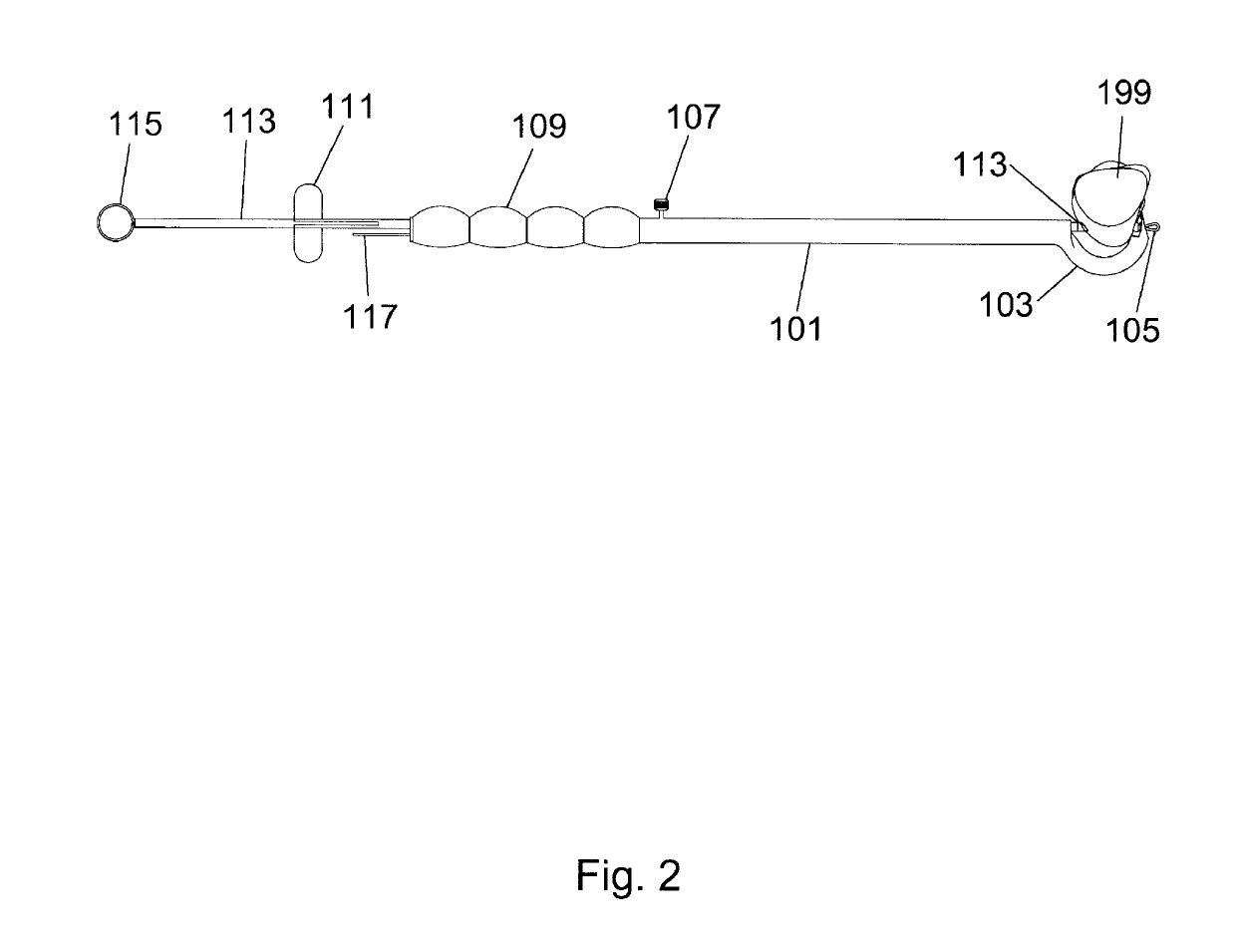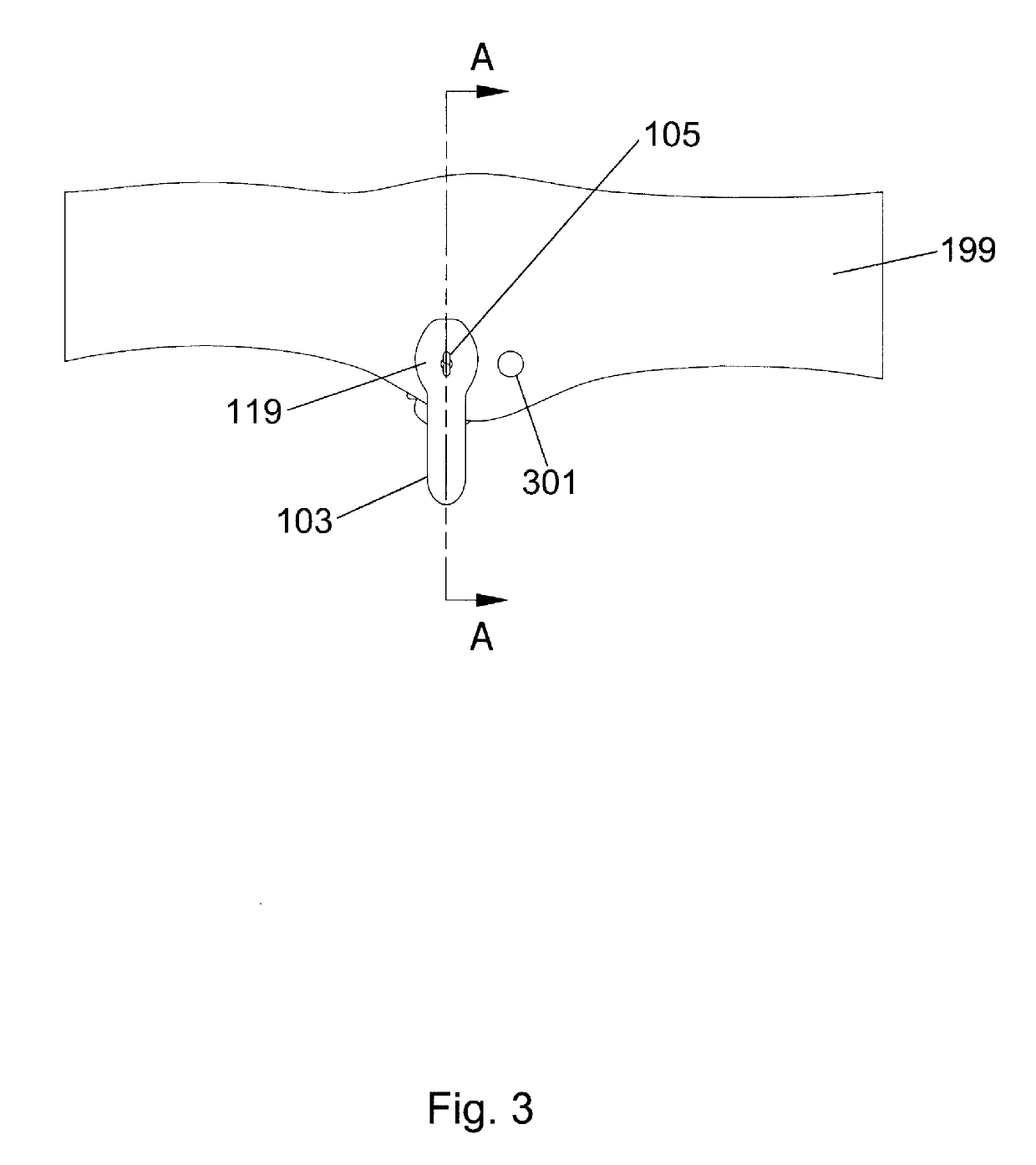Distal Biceps Tendon Repair Device
a distal biceps and tendons technology, applied in the field ofmusculoskeletal repair, can solve the problems of increasing the risk of heteropic ossification, damage to the supinator muscle, and not having a device currently available to allow for perfect anatomical repair of distal biceps tendons, and reducing muscle strength after surgery
- Summary
- Abstract
- Description
- Claims
- Application Information
AI Technical Summary
Benefits of technology
Problems solved by technology
Method used
Image
Examples
Embodiment Construction
[0025]For a general understanding of the present invention, reference is made to the drawings. In the drawings, like reference numerals have been used throughout to designate identical elements.
[0026]The present invention will be described by way of example, and not limitation. Modifications, improvements and additions to the invention described herein may be determined after reading this specification and viewing the accompanying drawings; such modifications, improvements, and auditions being considered included in the spirit and broad scope of the present invention and its various embodiments described or envisioned herein.
[0027]The distal biceps tendon repair device allows for the repair and anatomically correct reattachment, repair and healing of a distal biceps tendon tear using a single incision anterior surgical approach. Such an approach provides for superior supination strength post-surgery due to the tendon reattachment point used, while reducing the risk associated with a...
PUM
 Login to View More
Login to View More Abstract
Description
Claims
Application Information
 Login to View More
Login to View More - R&D
- Intellectual Property
- Life Sciences
- Materials
- Tech Scout
- Unparalleled Data Quality
- Higher Quality Content
- 60% Fewer Hallucinations
Browse by: Latest US Patents, China's latest patents, Technical Efficacy Thesaurus, Application Domain, Technology Topic, Popular Technical Reports.
© 2025 PatSnap. All rights reserved.Legal|Privacy policy|Modern Slavery Act Transparency Statement|Sitemap|About US| Contact US: help@patsnap.com



